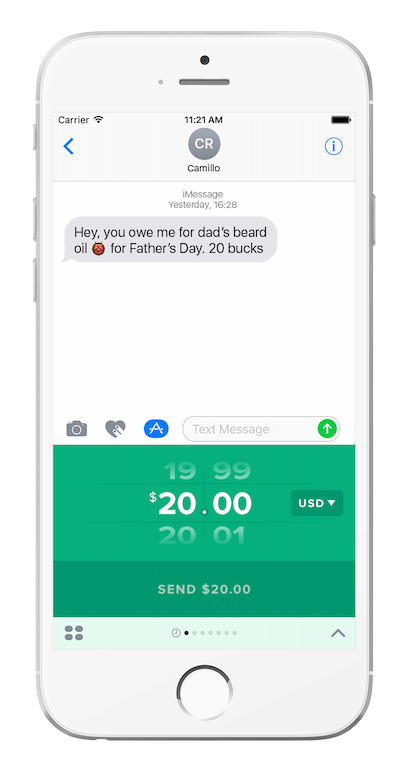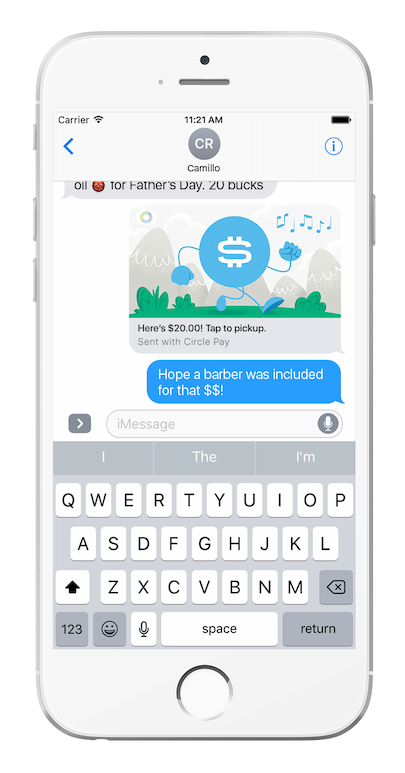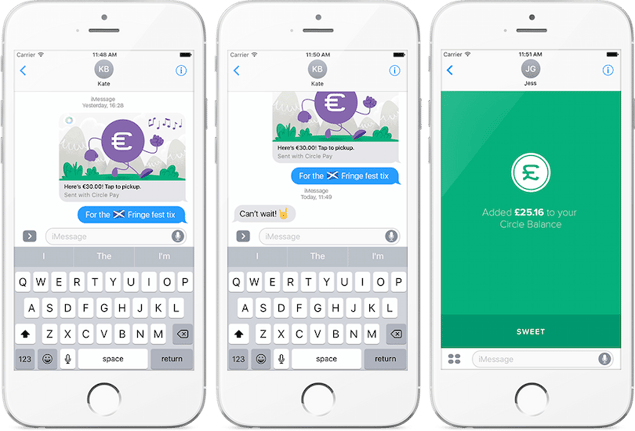Today we announced the availability of Circle for iMessage, which enables anyone using iOS 10 to send and receive social and personal payments without fees to anyone in the world directly within Apple’s iMessage. Customers can send dollars, euro, pound sterling and bitcoin to anyone directly inside of iMessage, and can fund payments and cash out using almost any bank in the US, UK and, soon, Europe.
When we started Circle, we had a vision that “money should work the way that the internet works” -- instant, open, global, free, and fun. We can share messages, experiences and photos and videos with one another; we can communicate in real-time with anyone on the planet; we can publish our news and opinions through any form of content, all in an instant, open, global, free and delightful way. Why shouldn’t money work the same way?
Mobile Messaging, App Design, and China’s Influence
“Working the way that the internet works” isn’t just a technical phrase about protocols and networks. It means blending with the behaviors we prefer when we engage with one another as humans. On mobile devices, this means messaging. We connect to our friends, family, and colleagues by sending messages across our devices, within apps, and on social networks.
The most recent era of mobile app design embraced messaging as mobile’s killer feature by building bespoke messaging features into a multitude of apps. But the new era of mobile app design flips that approach on its head: Many app experiences will be designed within a small number of familiar standard messaging platforms such as iMessage and Facebook Messenger.
China pioneered this trend. Through their dominant WeChat product, Tencent has for years supported social interactions, payments, games, media sharing, merchant services and other app experiences within the WeChat messaging app. In China, WeChat does not resemble an “app” so much as a container for other apps -- a de facto operating system.
Companies like Tencent and Alipay also led the way in demonstrating the power of social payments integrated within messaging and commerce experiences. Half a billion people in China use social payment apps on a weekly or monthly basis, and have leapfrogged what we in the West think of as “retail banking” and “checking accounts” toward a world that depends increasingly on messaging digital cash.
But unlike China where social and p2p payments represent a ubiquitous consumer behavior, we in the West stand in the early stages of social payments adoption. And just as the integration of payments with messaging in China led to explosive growth, we believe that the deep integration of consumer payment experiences with messaging will likely define the retail finance franchise of the future.
Apple’s step to open up iMessage is one big step in that direction. It enables apps to feel less like echoes of shrinkwrapped standalone software purchased from a store and installed onto operating systems, and more like fluid, natural extensions of how we already interact with one another every day on our mobile devices.
How does Circle for iMessage work?
Any customer with iOS 10 can use Circle to send and receive payments directly within iMessage. Circle for iMessage will be available imminently, synchronous with the general availability of iOS 10 for iPhone customers.
Customers who want to send money can use the built-in iMessage app store to grab the Circle for iMessage app (if you already have the Circle iOS app, it will appear automatically within your installed iMessage apps), create an account, and link a debit card and send payments using dollars, euros, pounds and bitcoin to any other iMessage or SMS/MMS customer in the world.


Customers receiving payments who have iOS 10 will see an interactive app widget they can use to cash out their payment to any bank account or blockchain-compatible digital wallet within the Circle app. Those customers can then also send payments globally using their debit card.

Customers receiving payments using Android will receive a URL that they can use to cash out as well as send their own payments, as well as easily onboard into Circle for Android.
Customers of iMessage can send a Circle payment to any iMessage contact or mobile phone number in the world.
Customers outside of markets in which Circle supports local currency will receive bitcoin, and can cash out to their local bank account and currency using a regional exchange. Circle is continually working on adding new markets and currencies, including our previously announced effort to bring Chinese Yuan (RMB) into Circle’s service.
What’s Next?
These are the exciting early days of messaging-as-OS and app containers. Iterating on the best experiences for this new paradigm is a critical focus for us. At the same time, we will continue to polish our apps for iOS, Android, and Web, but realize that merely transporting those app experiences inside iMessage (and others) would be uncreative and ineffective. Please share your thoughts as we work toward surfacing the best experiences for this new open global financial system we’re all helping to create together -- let us know how we’re doing!
Where to Get It
You can get the new version of Circle Pay right now from the App Store, and when you update your iPhone to iOS 10 you'll automatically have Circle Pay for iMessage.
Jeremy & Sean, Circle Co-Founders